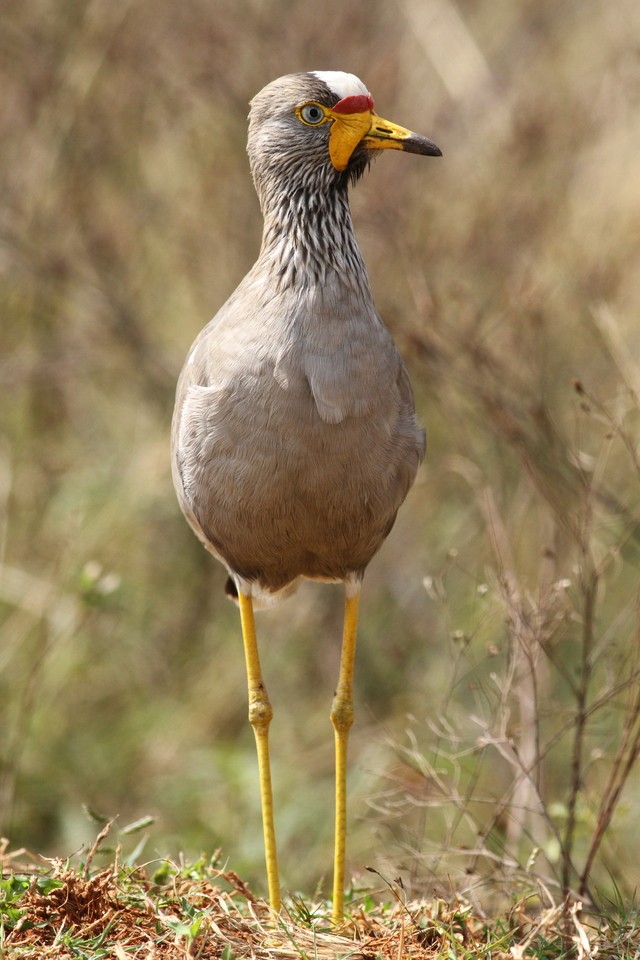African Wattled Lapwing
A species of Lapwings, Also known as Senegal Wattled Plover Scientific name : Vanellus senegallus Genus : Lapwings
African Wattled Lapwing, A species of Lapwings
Also known as:
Senegal Wattled Plover
Botanical name: Vanellus senegallus
Genus: Lapwings
Content
Description General Info
Description
The African wattled lapwing (Vanellus senegallus), also known as the Senegal wattled plover or simply wattled lapwing, is a large lapwing, a group of largish waders in the family Charadriidae. It is a resident breeder in most of sub-Saharan Africa outside the rainforests, although it has seasonal movements. These are conspicuous and unmistakable birds. They are large brown waders with a black crown, white forehead and large yellow facial wattles. The tail is white, tipped black, and the long legs are yellow. In flight, the upperwings have black flight feathers and brown coverts separated by a white bar. The underwings are white with black flight feathers. The African wattled lapwing has a loud peep-peep call. This species is a common breeder in wet lowland habitats, especially damp grassland. It often feeds in drier habitats, such as golf courses, picking insects and other invertebrates from the ground. It lays three or four eggs on a ground scrape. The African wattled lapwing is one of the species to which the Agreement on the Conservation of African-Eurasian Migratory Waterbirds (AEWA) applies. 
Size
34 cm
Nest Placement
Ground
Feeding Habits
African Wattled Lapwing primarily eat insects like grasshoppers, beetles, and termites, but also consume worms and seeds. They forage by walking, pausing, and grabbing prey, not using typical plover methods. Large foraging groups may form.
Habitat
African Wattled Lapwing inhabits a wide range of lowland environments, generally favoring wetter areas. These birds are commonly found in proximity to bodies of water, such as lakes, ponds, rivers, and marshes. They also occupy drier areas including savannas, open fields, cultivated lands, and wastelands. Adapted to various landscapes, african Wattled Lapwing may utilize burnt grasslands and take advantage of flooded agricultural fields like rice paddies. They are known to utilize termite mounds as vantage points. African Wattled Lapwing tends to coexist with other species in shared habitats without significant competition.
Dite type
Insectivorous
General Info
Feeding Habits
Bird food type
Species Status
Not globally threatened.
Scientific Classification
Phylum
Chordates Class
Birds Order
Shorebirds Family
Plovers Genus
Lapwings Species
African Wattled Lapwing 